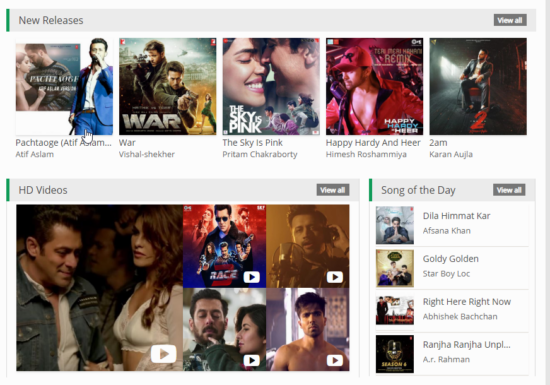The use of artificial intelligence (AI) in content detection has revolutionized the way we identify and categorize information. AI-powered content detector tools are now widely available on the market, and their advanced capabilities are enabling businesses and individuals to identify, manage and mitigate the risks of potentially harmful or inappropriate content. In this article, we will explore the top 6 AI content detector tools on the market, their features and benefits, and their potential applications in different industries.

1. Google Cloud Vision
All Heading
Google Cloud Vision is a popular AI content detector tool that provides image analysis capabilities to detect objects, faces, text, and logos within images. The tool uses machine learning algorithms to recognize and categorize visual content, which can be integrated with other applications to automate and optimize image processing workflows.
One of the key benefits of Google Cloud Vision is its high accuracy and speed of analysis, which can process large volumes of images within seconds. It can also identify the context of the image, such as identifying landmarks, detecting adult content, or recognizing product labels. Google Cloud Vision is widely used by businesses in the e-commerce, retail, and media industries to enhance their image recognition capabilities, automate product cataloging, and identify brand logo usage in social media channels.
2. IBM Watson Natural Language Understanding
IBM Watson Natural Language Understanding is an AI content detector tool that uses natural language processing (NLP) algorithms to analyze and understand the meaning and sentiment of text content. The tool can identify entities, concepts, emotions, and relations within the text, providing businesses with insights into customer feedback, market trends, and social media sentiment.
The key advantage of IBM Watson Natural Language Understanding is its ability to process unstructured data, such as social media comments, customer reviews, or news articles, and extract meaningful insights for business decision-making. The tool is also customizable, allowing users to train their models and refine the accuracy of the analysis. IBM Watson Natural Language Understanding is widely used by businesses in marketing, advertising, and customer service industries to monitor brand reputation, analyze customer feedback, and optimize marketing campaigns.
3. Amazon Rekognition
Amazon Rekognition is an AI content detector tool that provides image and video analysis capabilities to detect objects, scenes, faces, and activities within visual content. The tool uses deep learning algorithms to recognize and categorize visual content, which can be integrated with other applications to automate and optimize media processing workflows.
One of the key benefits of Amazon Rekognition is its ability to analyze live video streams, enabling real-time surveillance, security, and safety applications. The tool can also detect explicit or violent content within the video, providing businesses with a way to mitigate the risks of inappropriate content. Amazon Rekognition is widely used by businesses in security, surveillance, and media industries to enhance their video analysis capabilities, automate content tagging, and identify potentially harmful content.

4. OpenAI GPT-3
OpenAI GPT-3 is an AI content detector tool that uses natural language processing (NLP) algorithms to generate human-like text content. The tool can generate text in a variety of styles and formats, including news articles, product descriptions, and social media posts.
The key advantage of OpenAI GPT-3 is its ability to generate high-quality content at scale, reducing the time and resources required for content creation. The tool is also customizable, allowing users to fine-tune the language and style of the generated content. OpenAI GPT-3 is widely used by businesses in content marketing, social media, and e-commerce industries to generate product descriptions, social media posts, and news articles.
5. Clarifai
Clarifai is an AI content detector tool that provides image and video analysis capabilities to detect objects, scenes, and concepts within visual content. The tool uses deep learning algorithms to recognize and categorize visual content One of the key benefits of Clarifai is its ability to provide customized models for specific industries or use cases, such as fashion, food, or travel.
The tool can also be integrated with other applications to automate and optimize media processing workflows. Clarifai is widely used by businesses in advertising, e-commerce, and media industries to enhance their image and video recognition capabilities, automate content tagging, and analyze customer engagement.
6. Sightengine
Sightengine is an AI content detector tool that provides image and video analysis capabilities to detect explicit or harmful content within visual content. The tool uses machine learning algorithms to recognize and categorize explicit content, such as nudity, violence, or drugs, which can be used to mitigate the risks of inappropriate content.
One of the key benefits of Sightengine is its high accuracy and speed of analysis, which can process large volumes of images within seconds. The tool can also be integrated with other applications to automate and optimize content moderation workflows. Sightengine is widely used by businesses in social media, e-commerce, and gaming industries to moderate user-generated content, enhance user safety and comply with regulations.
In conclusion, the use of AI content detector tools has become essential in the digital age, enabling businesses and individuals to automate and optimize content processing workflows, mitigate risks, and enhance customer experience. The top 6 AI content detector tools on the market, including Google Cloud Vision, IBM Watson Natural Language Understanding, Amazon Rekognition, OpenAI GPT-3, Clarifai, and Sightengine, provide advanced capabilities for image and text analysis, content moderation, and content generation.
Each tool has its unique features and benefits and can be customized for specific industries or use cases. As the demand for AI-powered content detection continues to grow, we can expect to see further innovation and integration of AI technology in the content management space.













Recent Comments